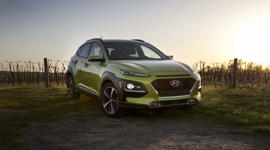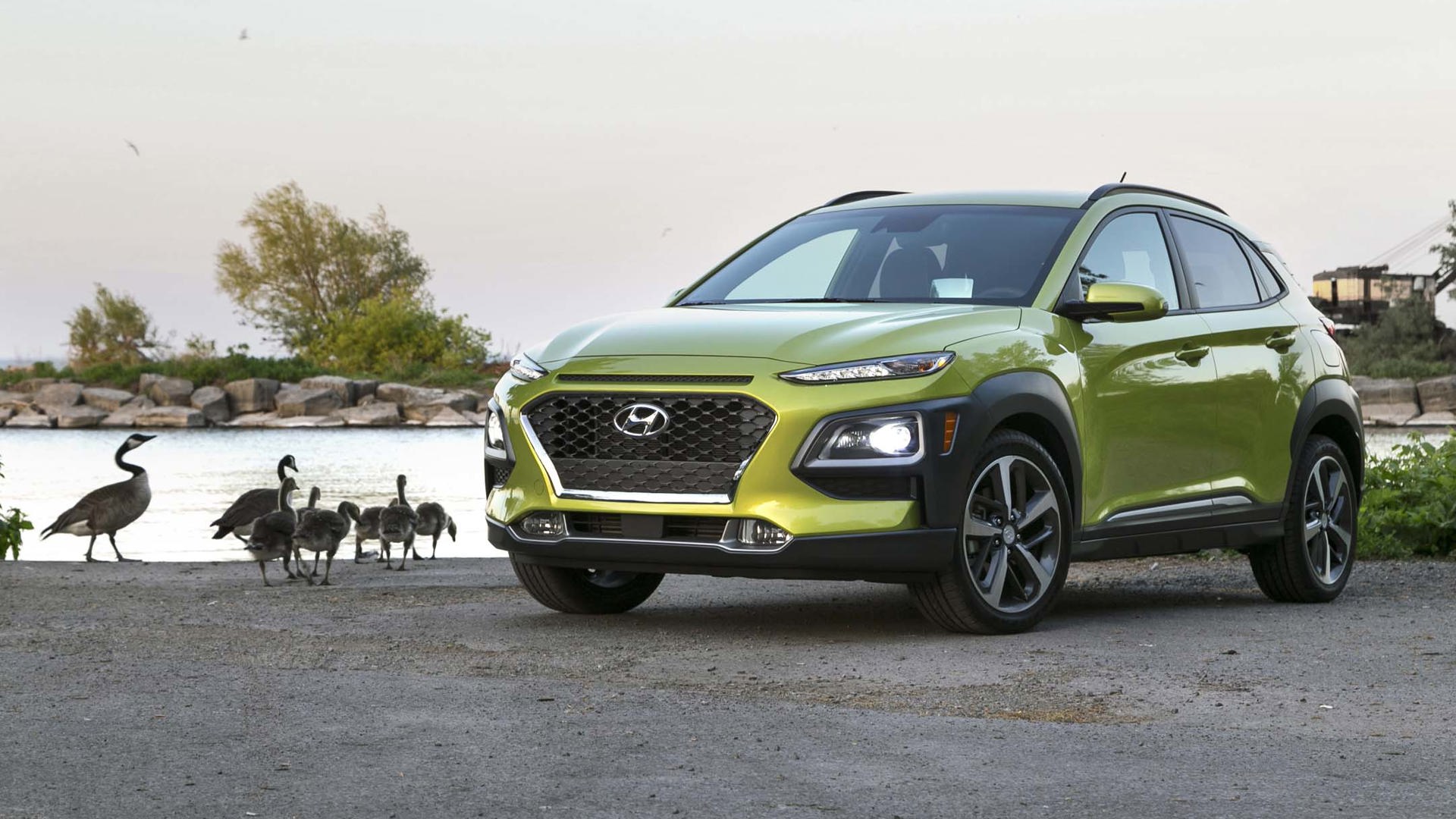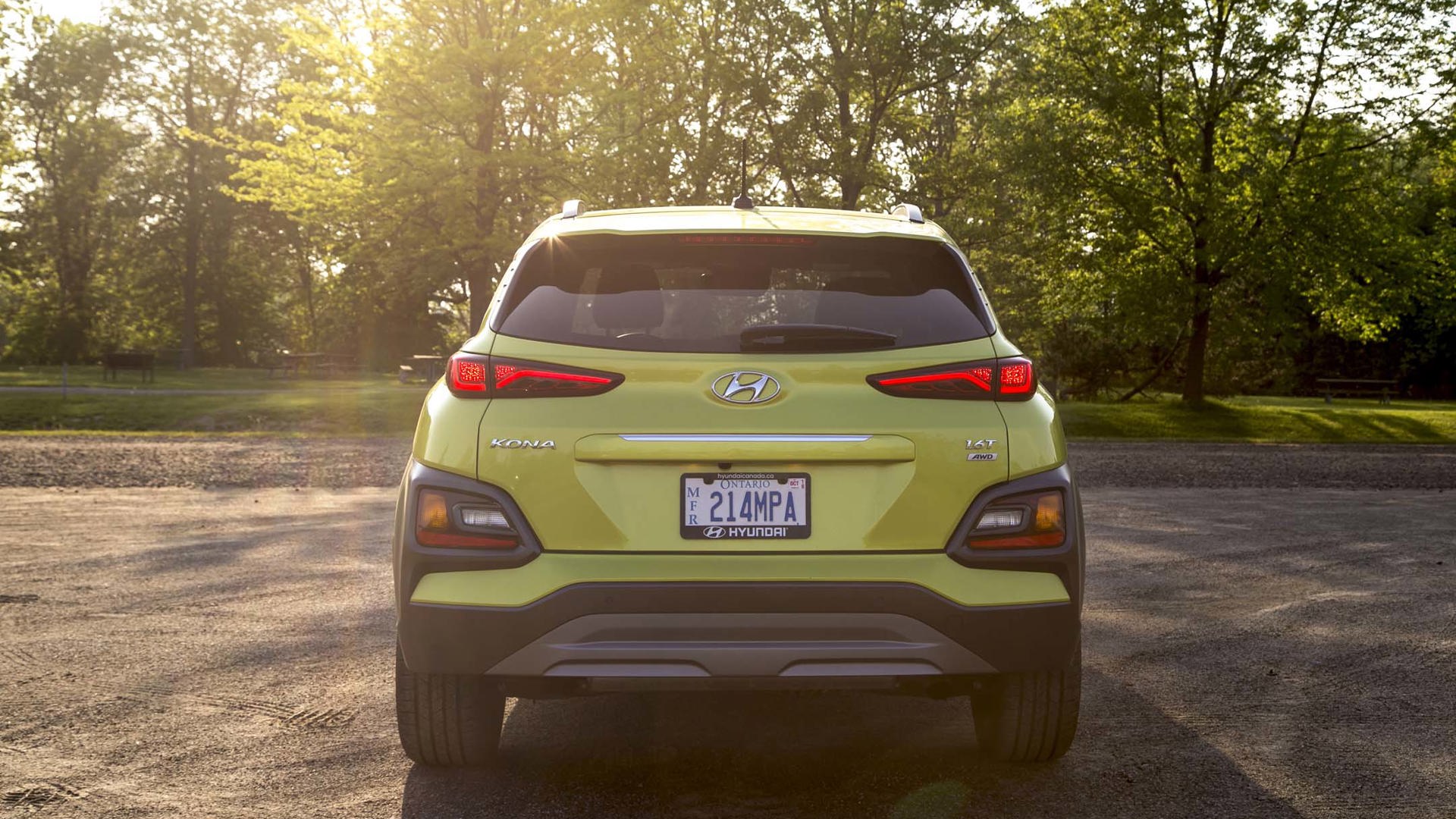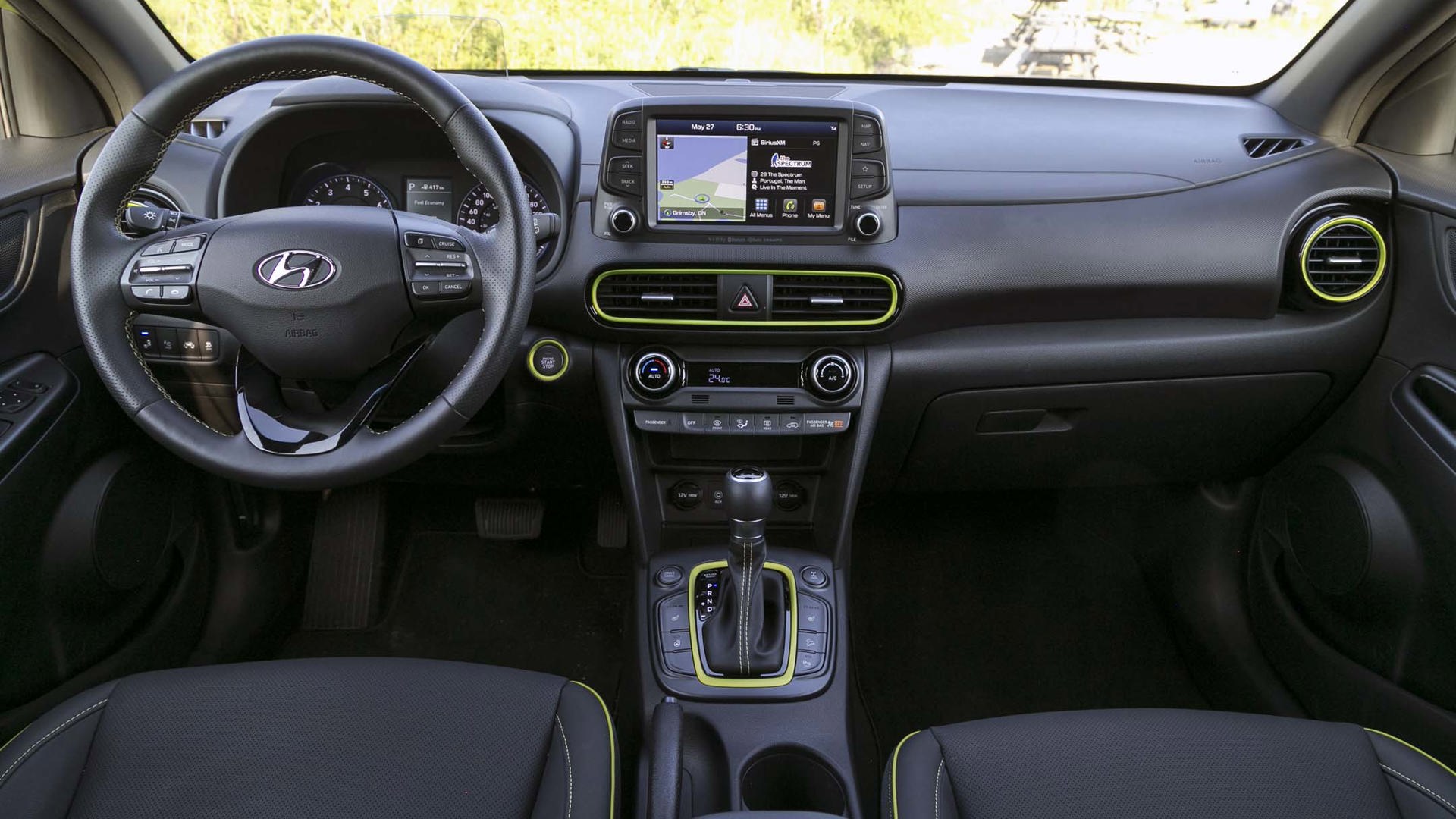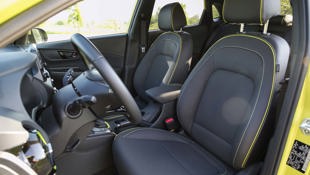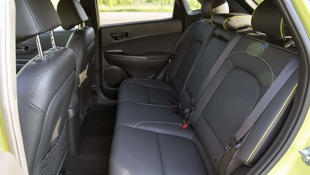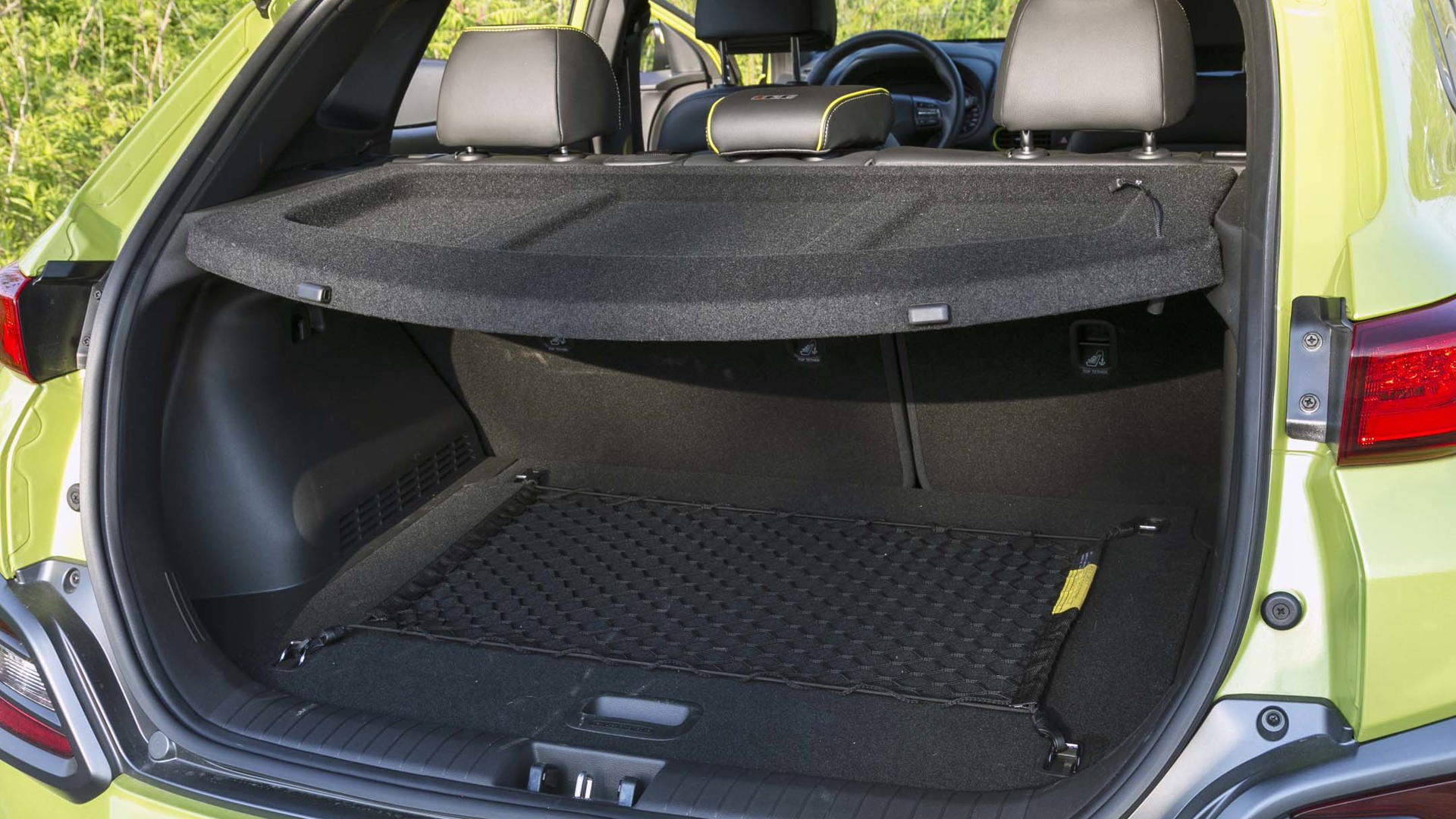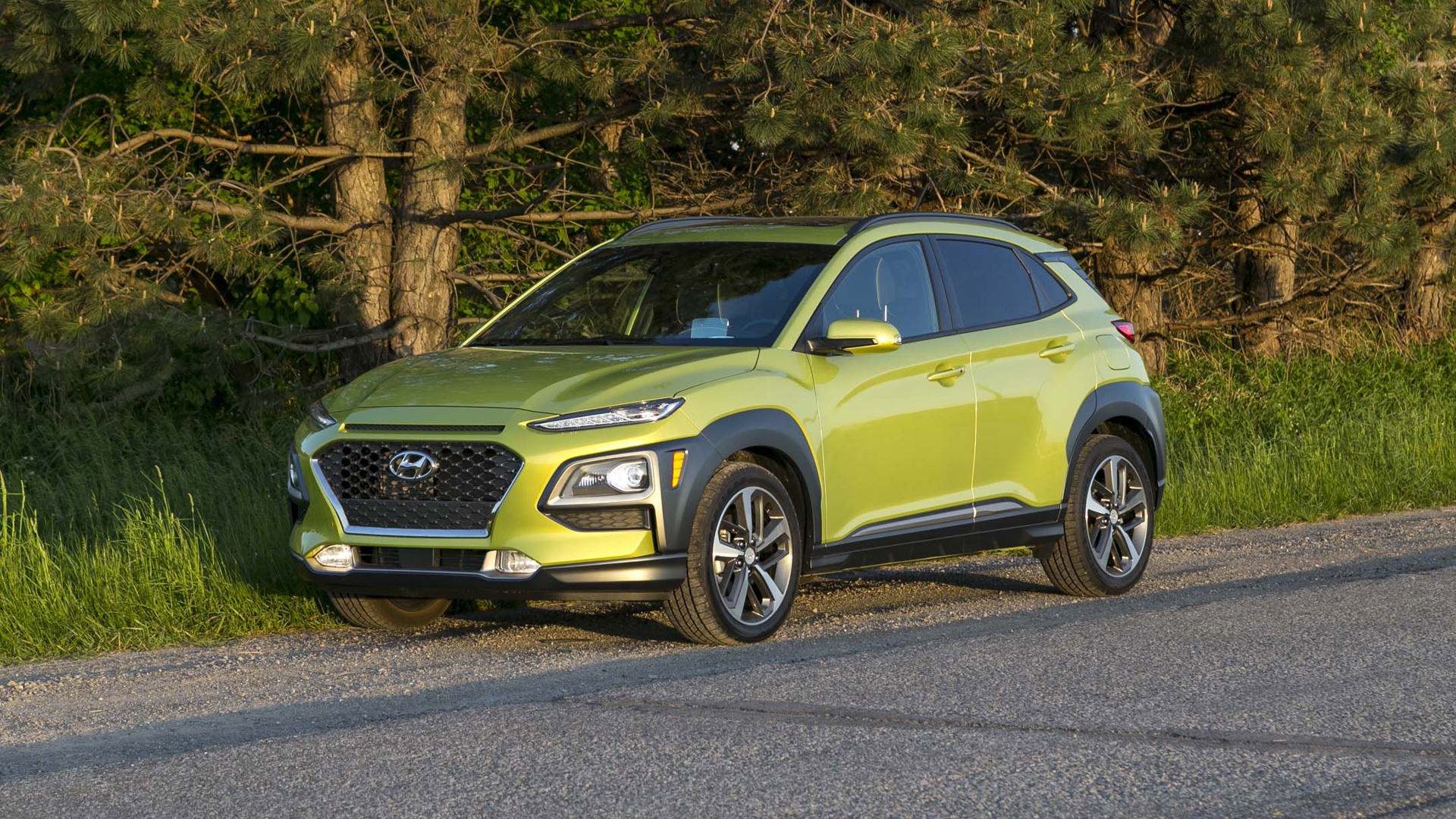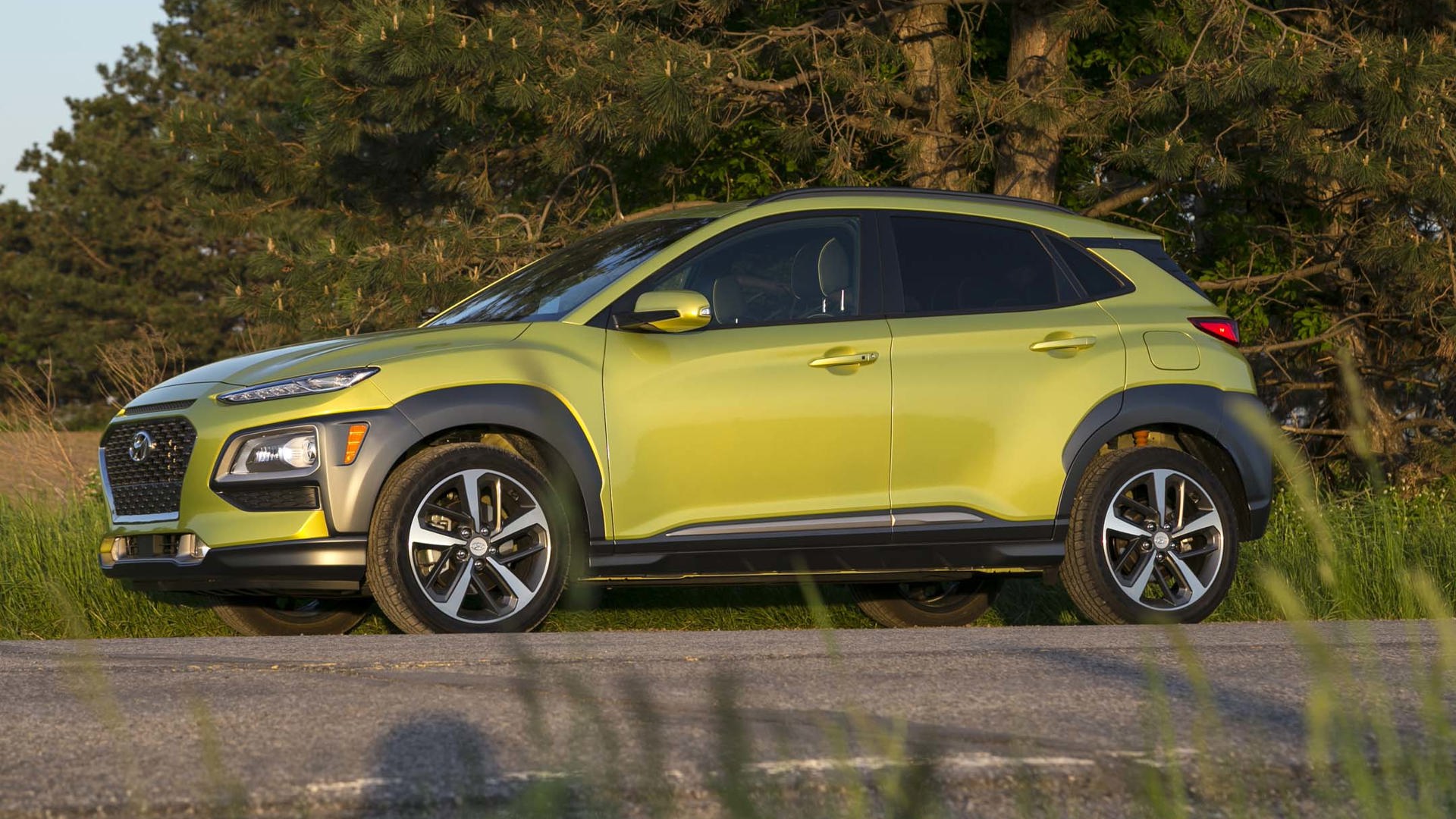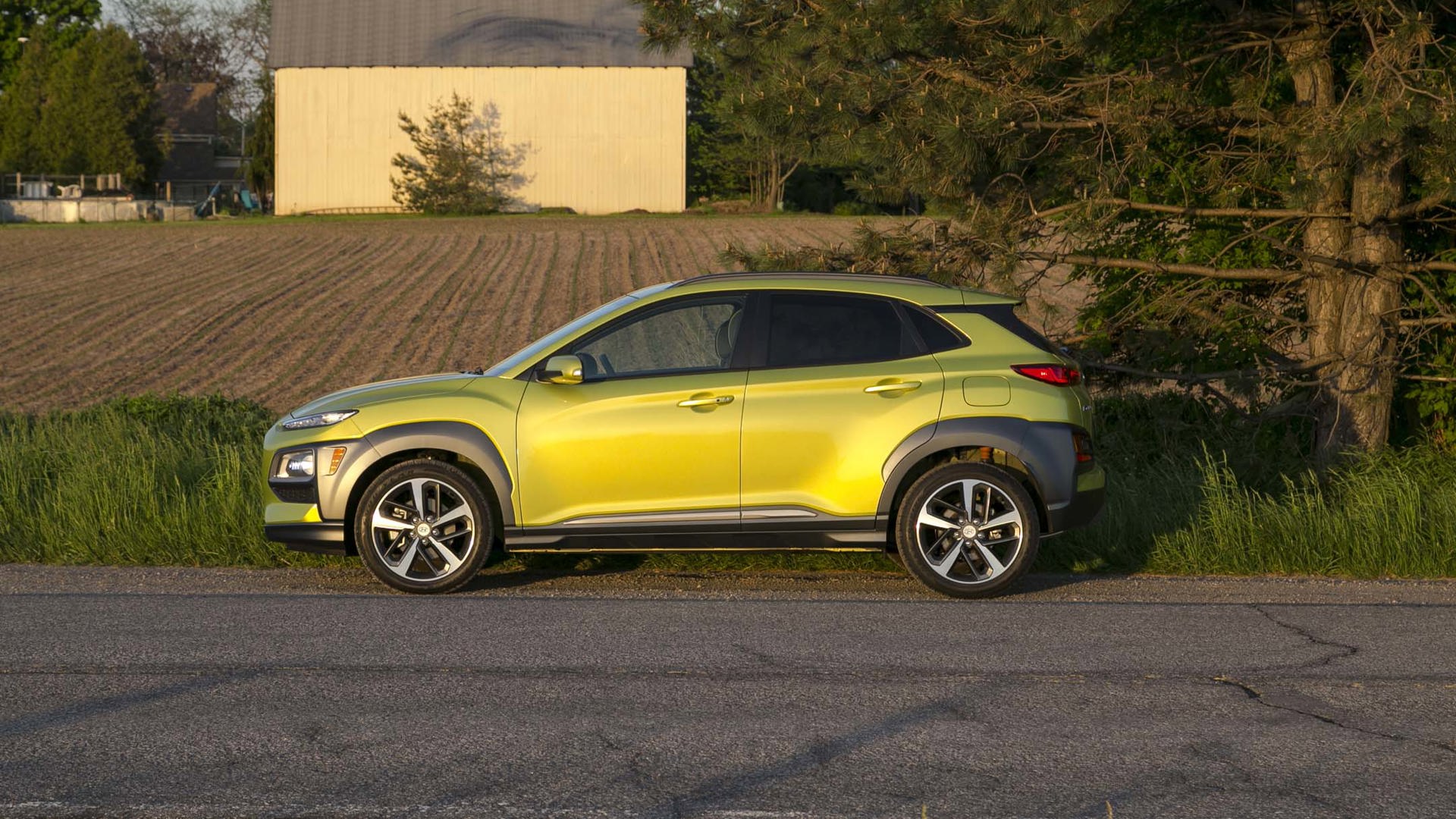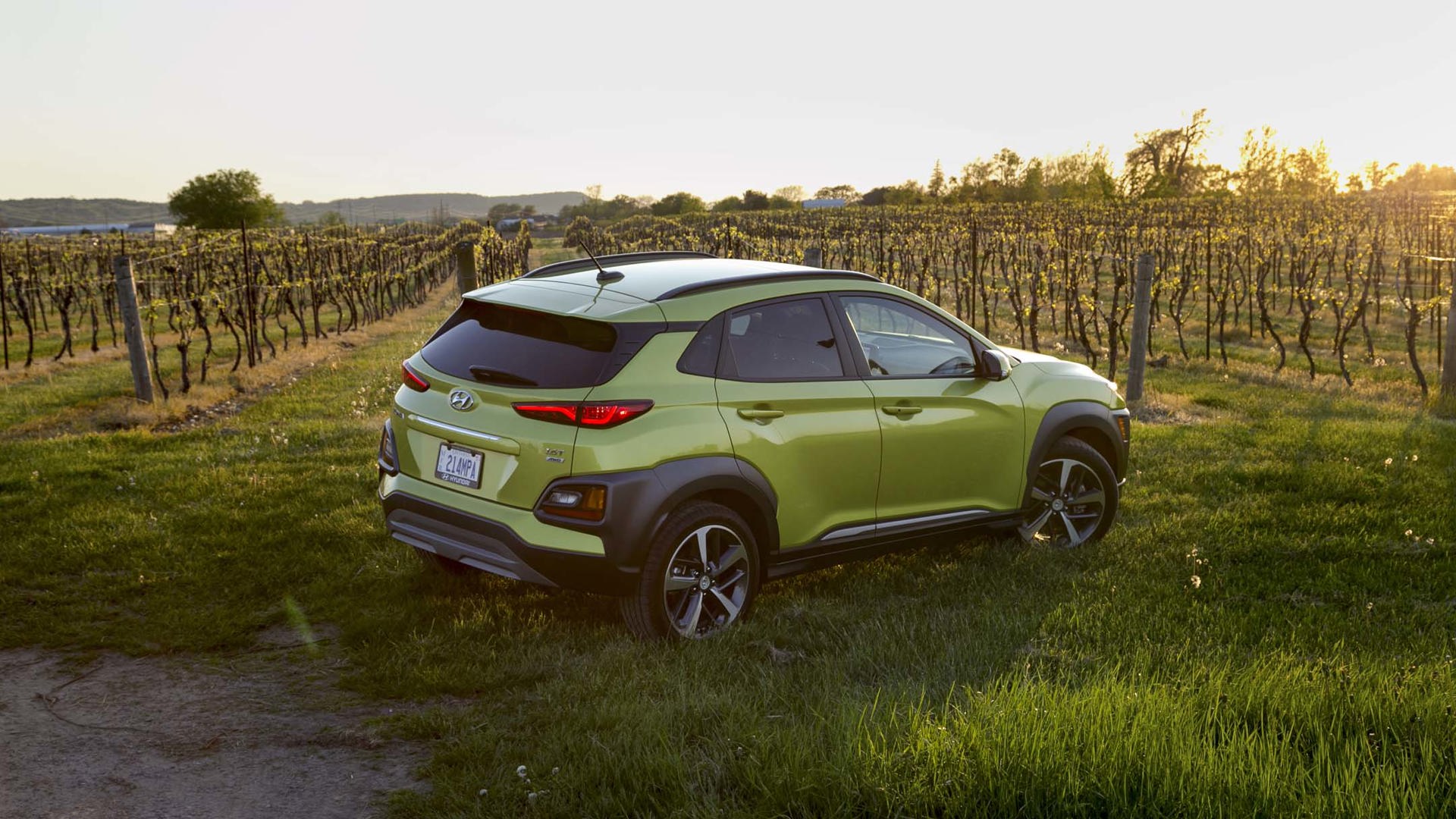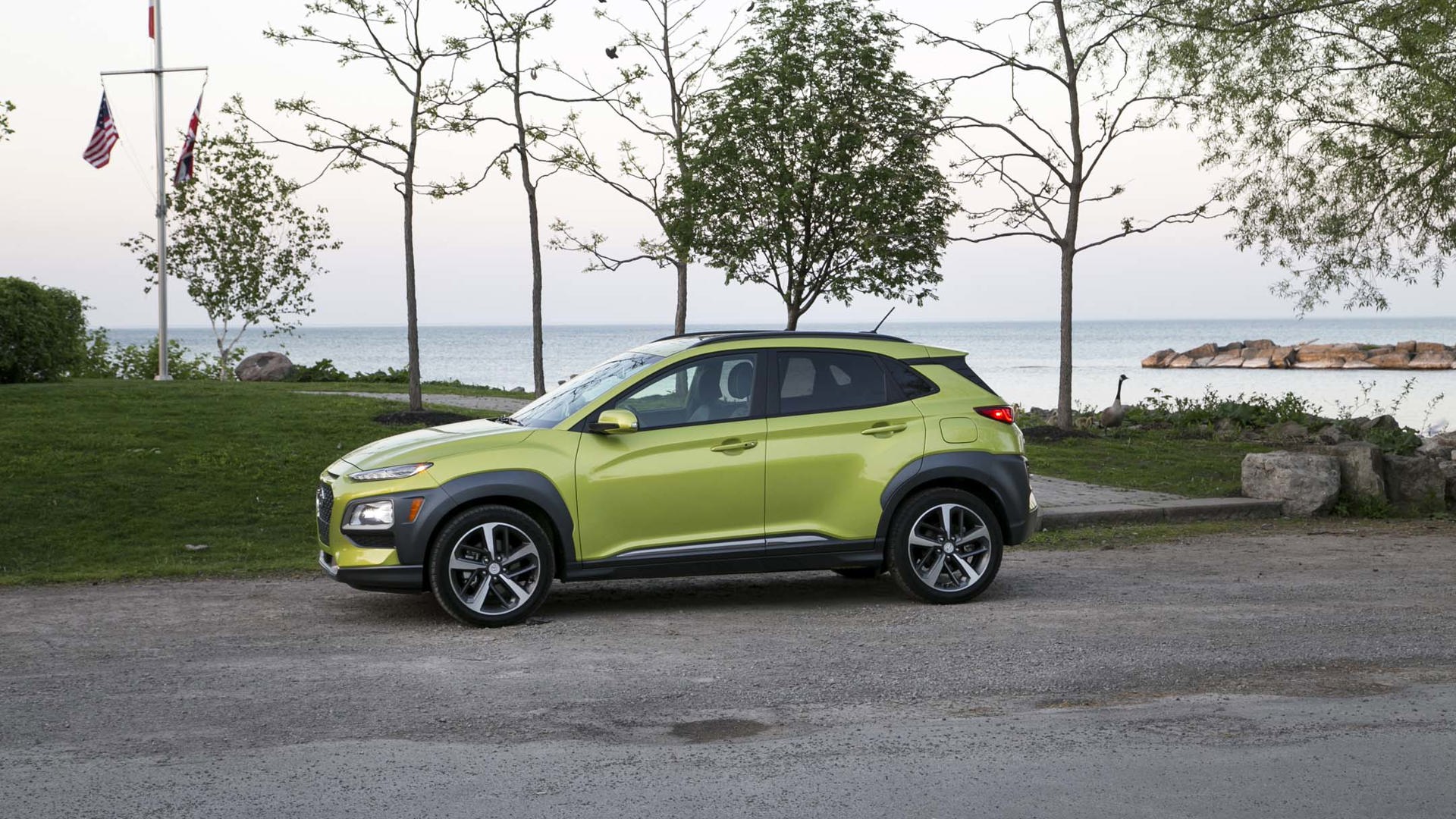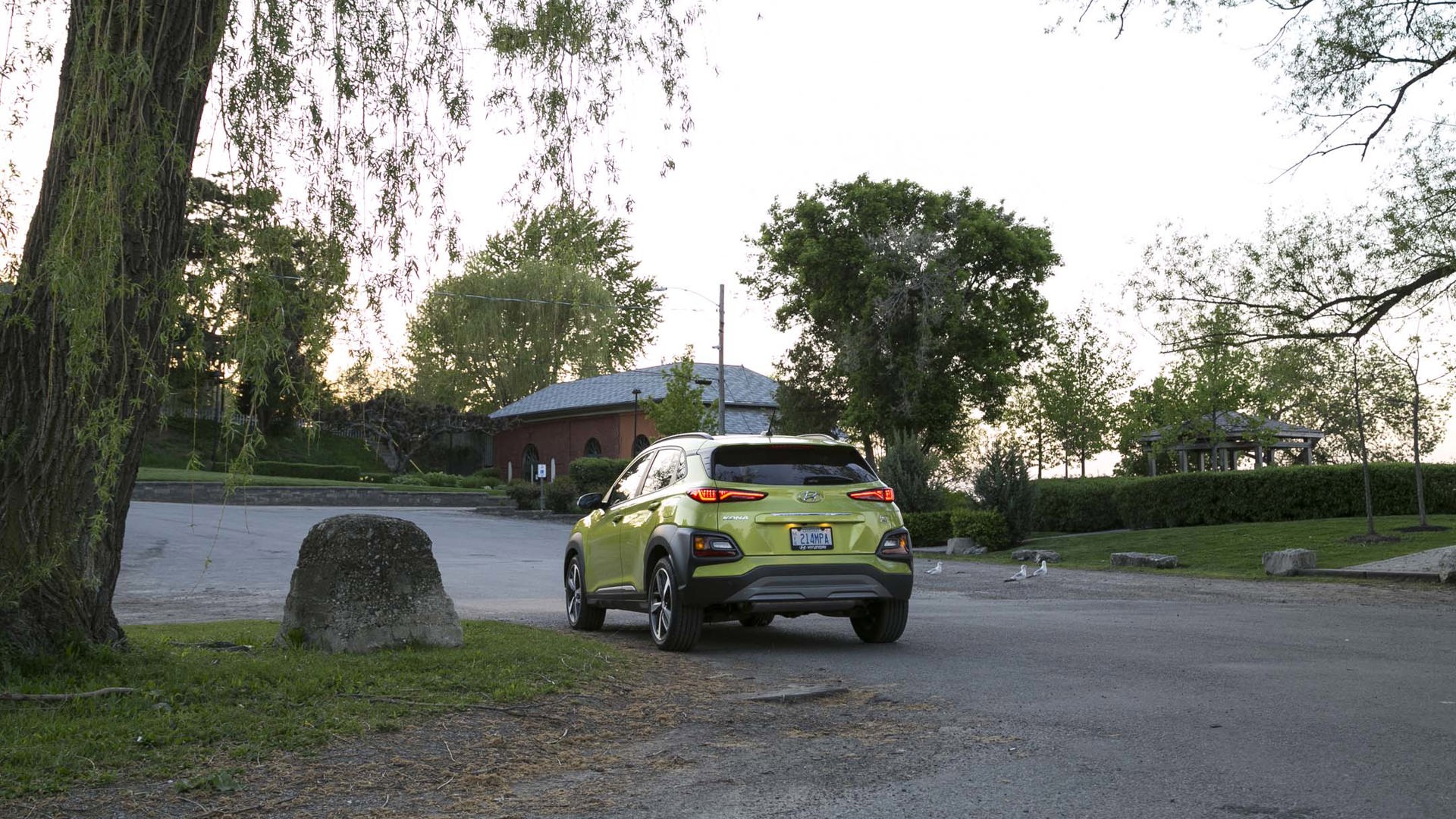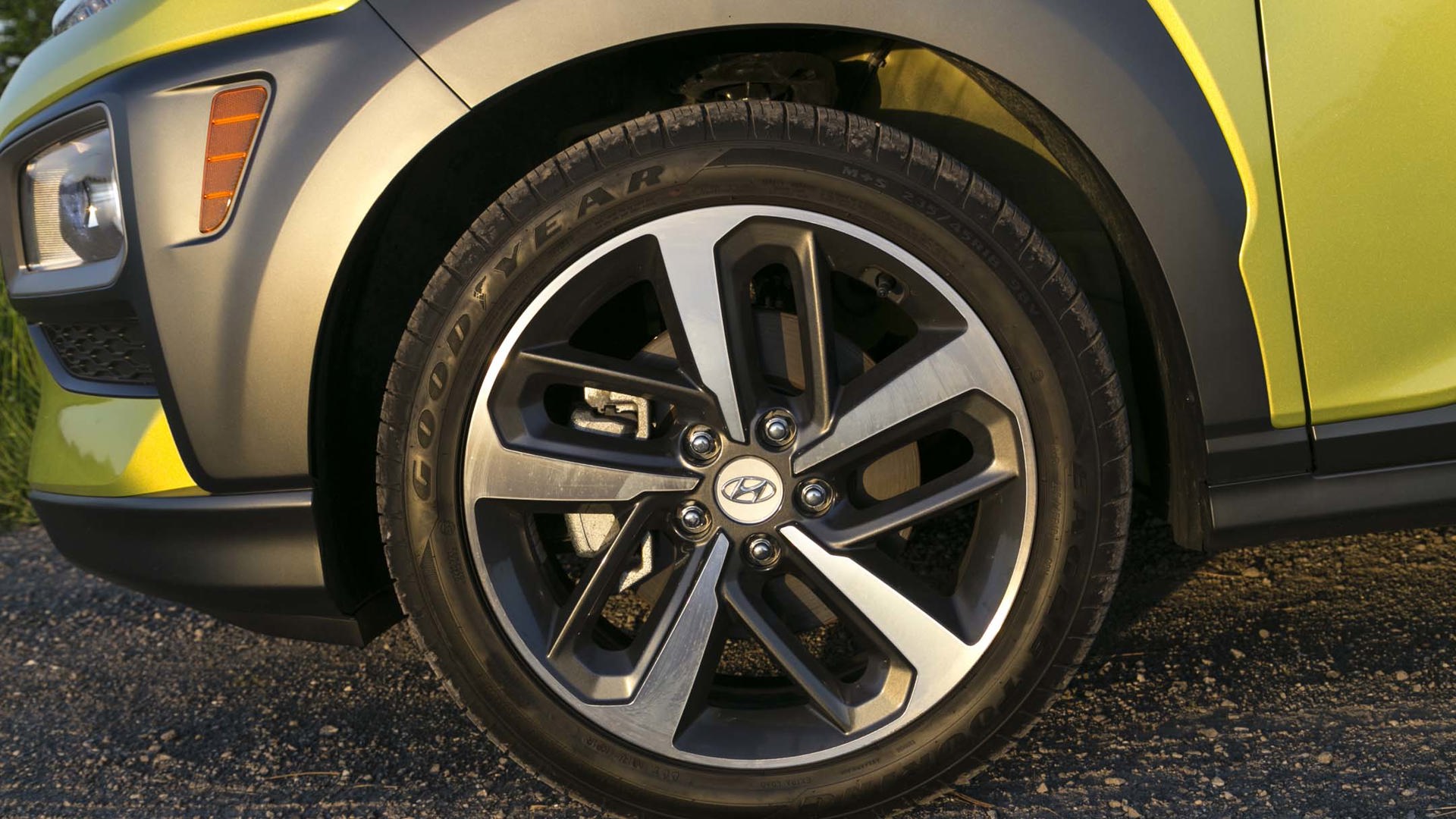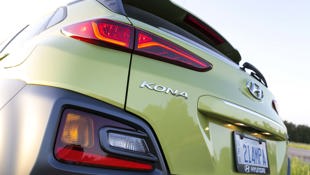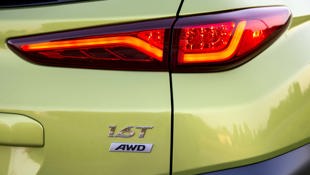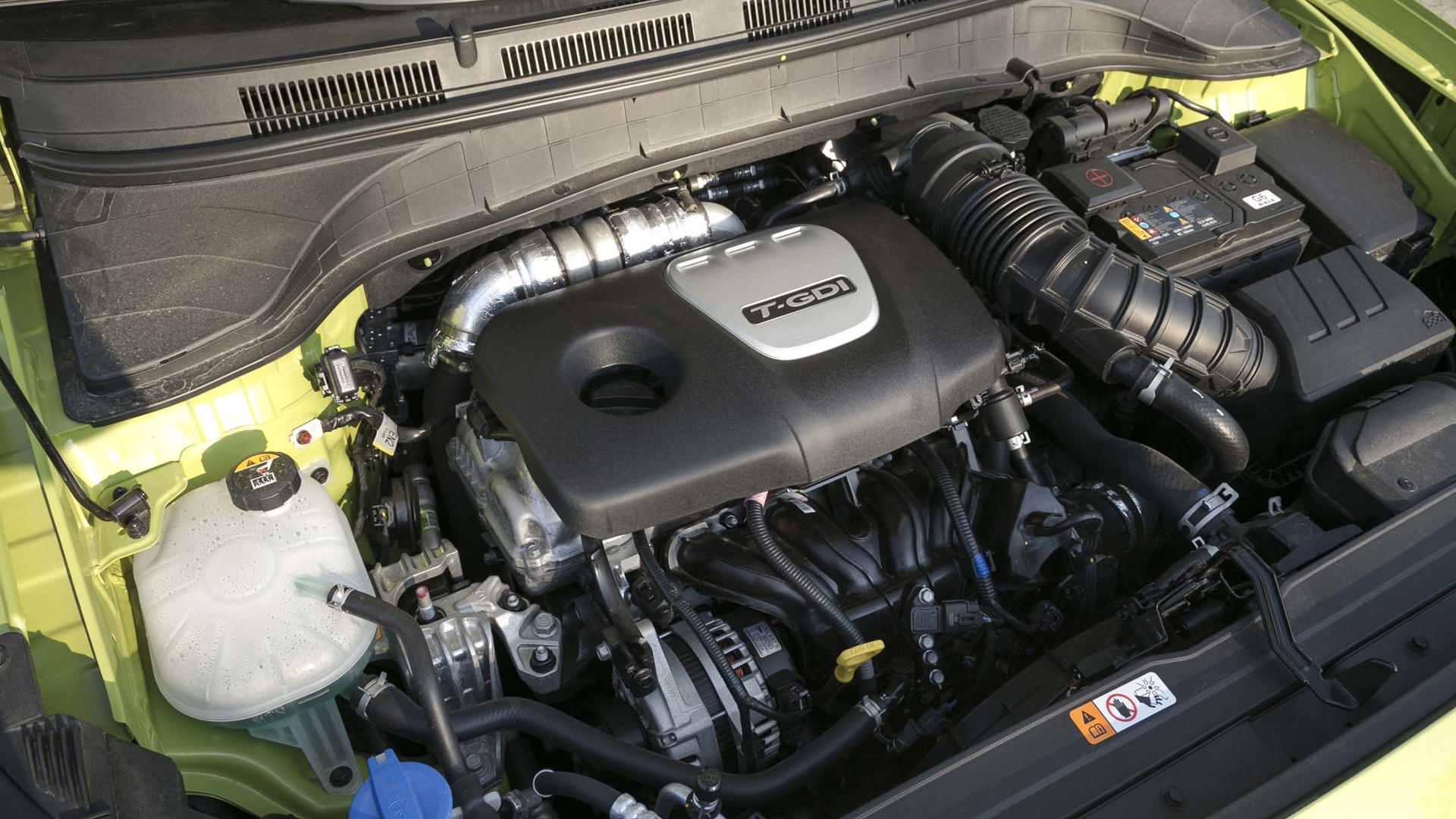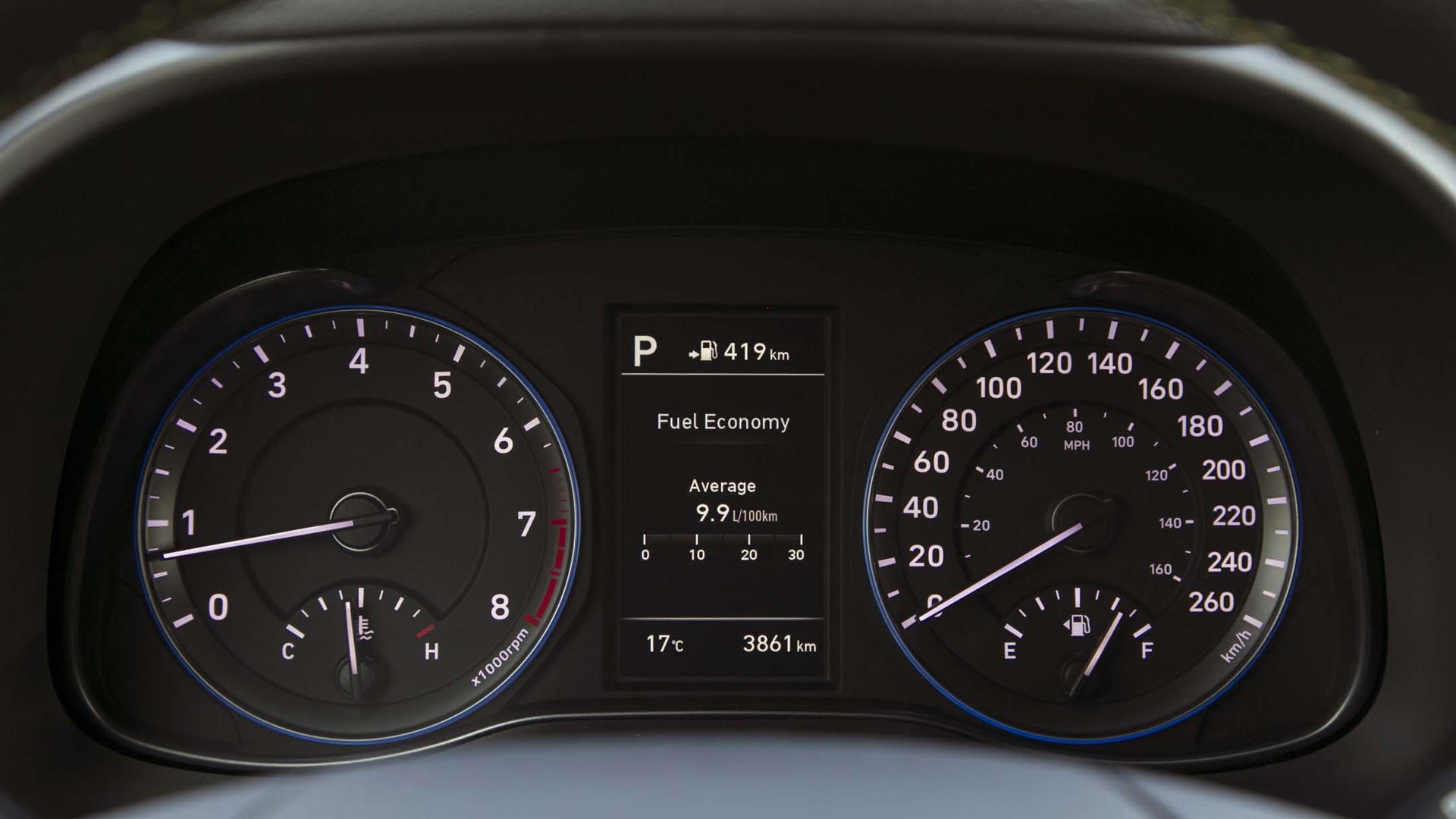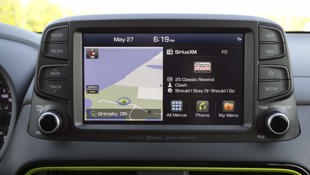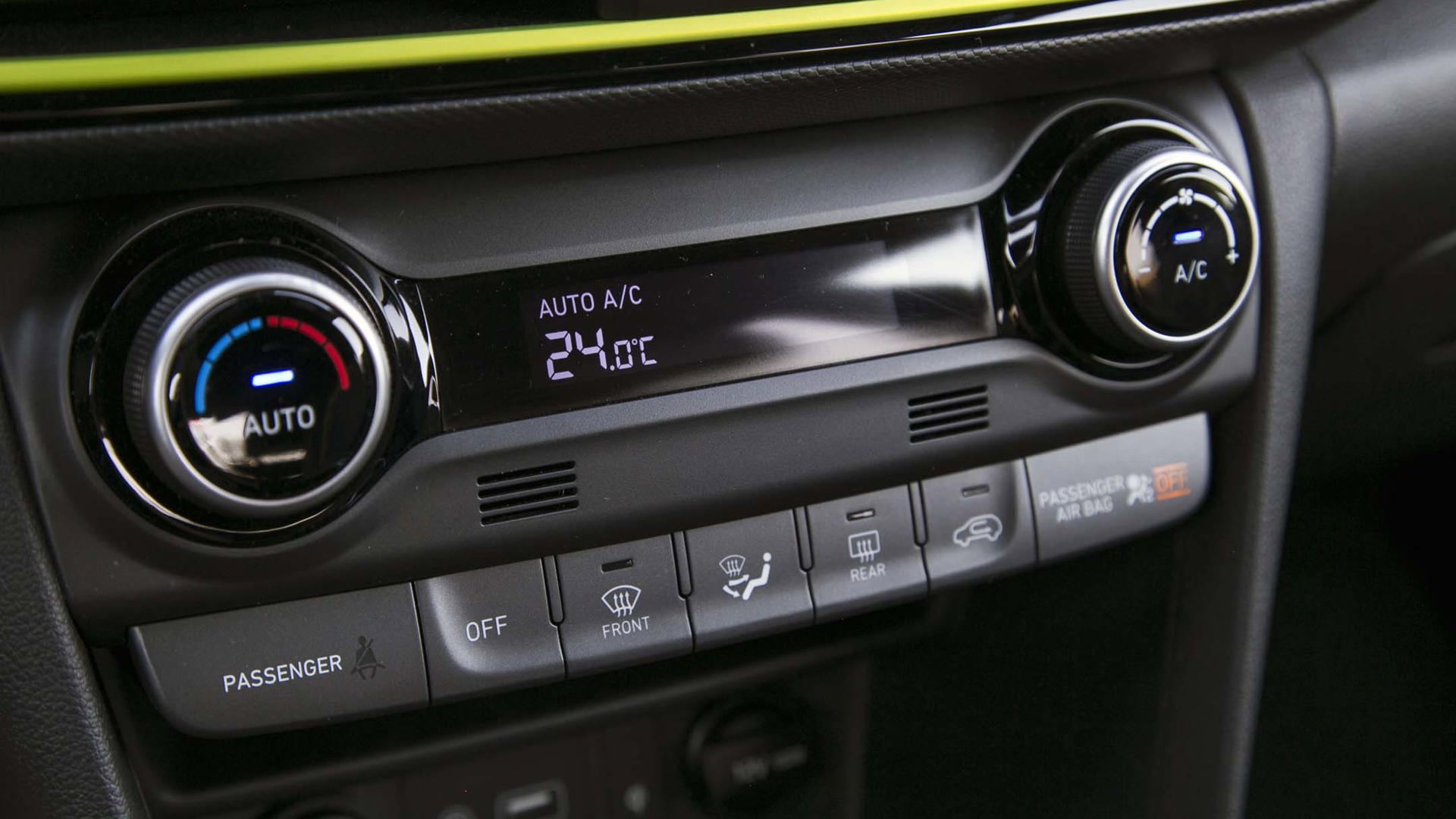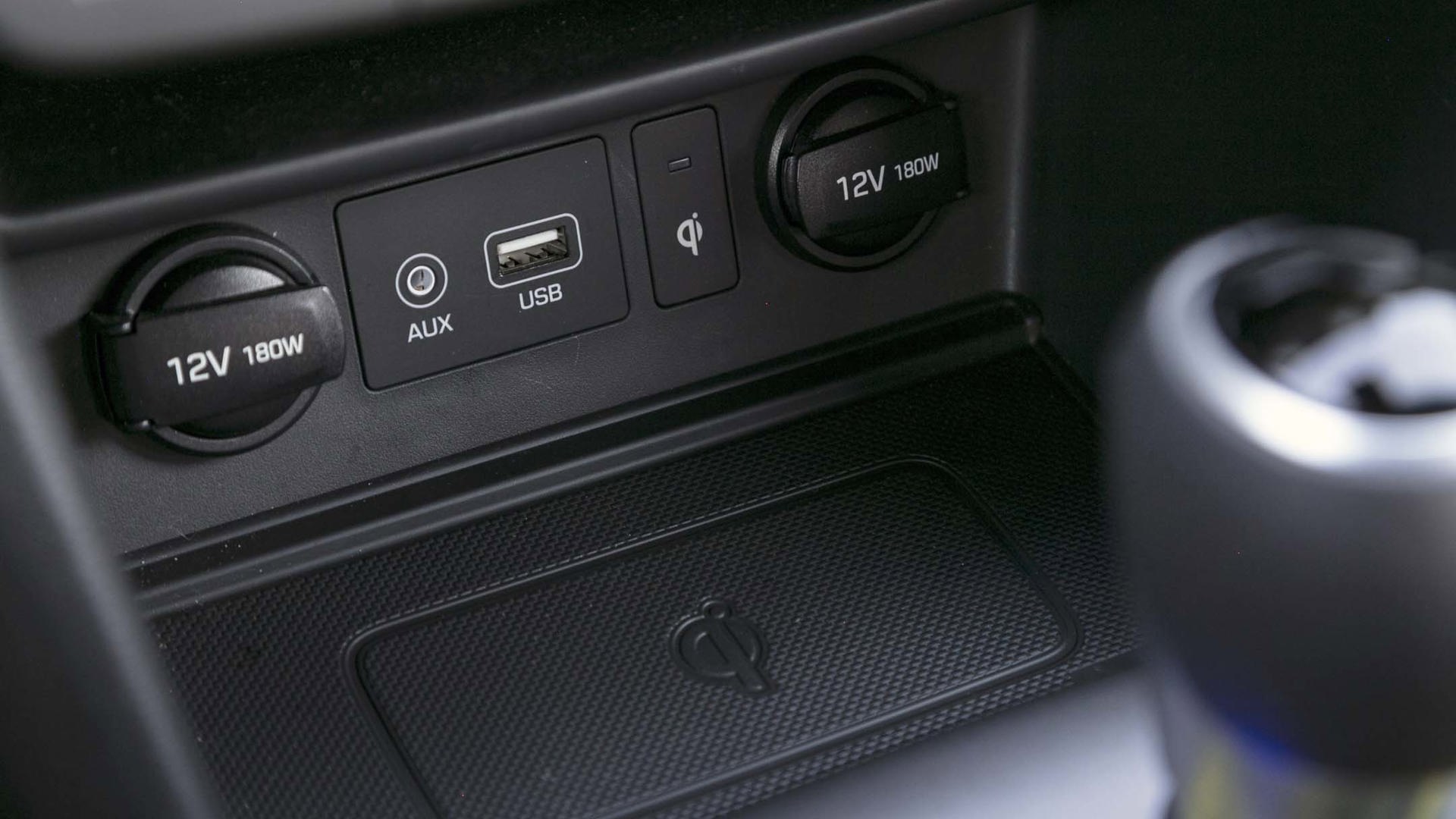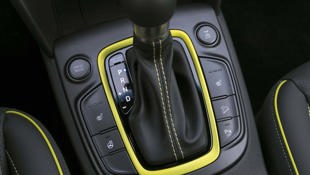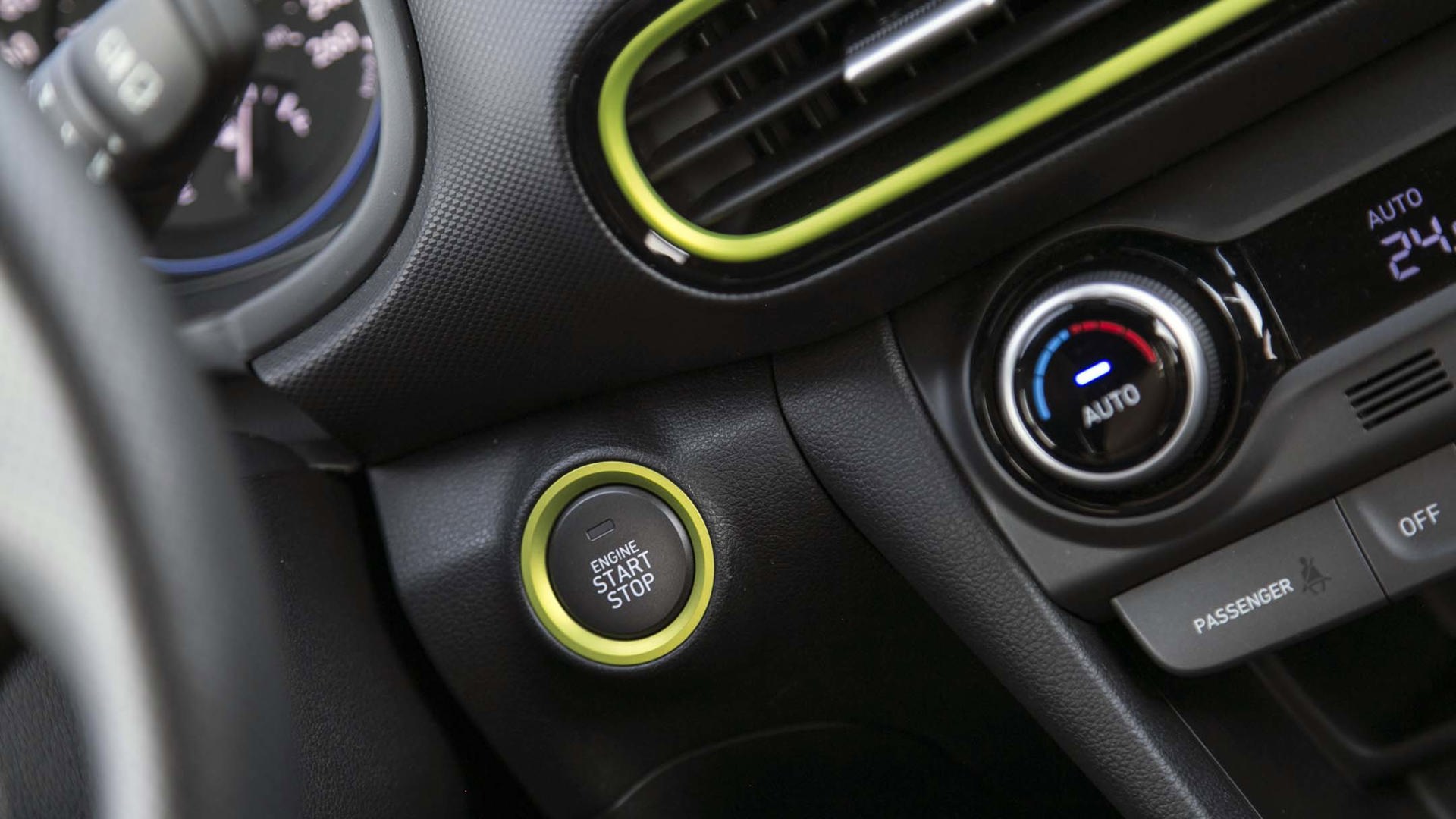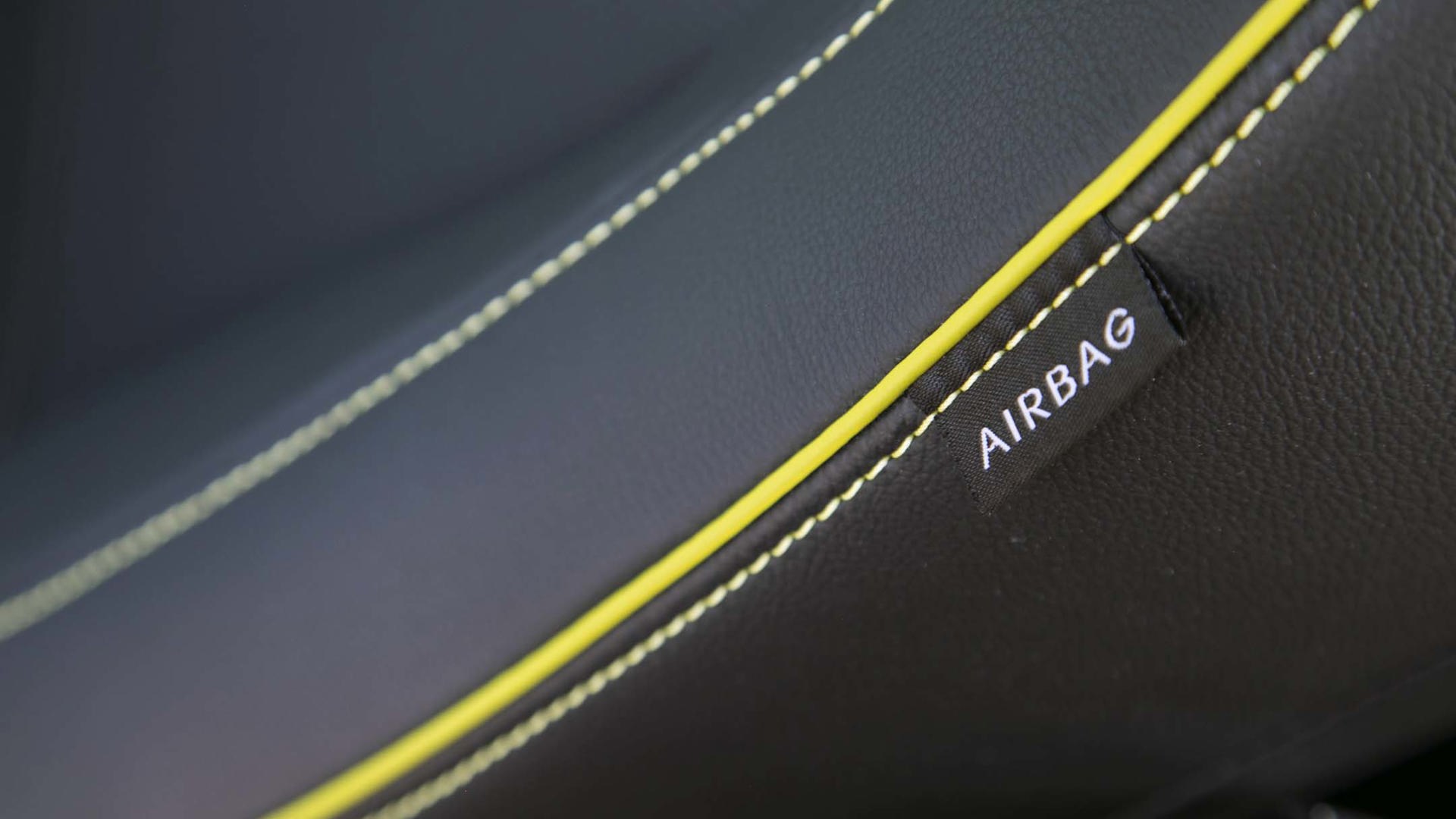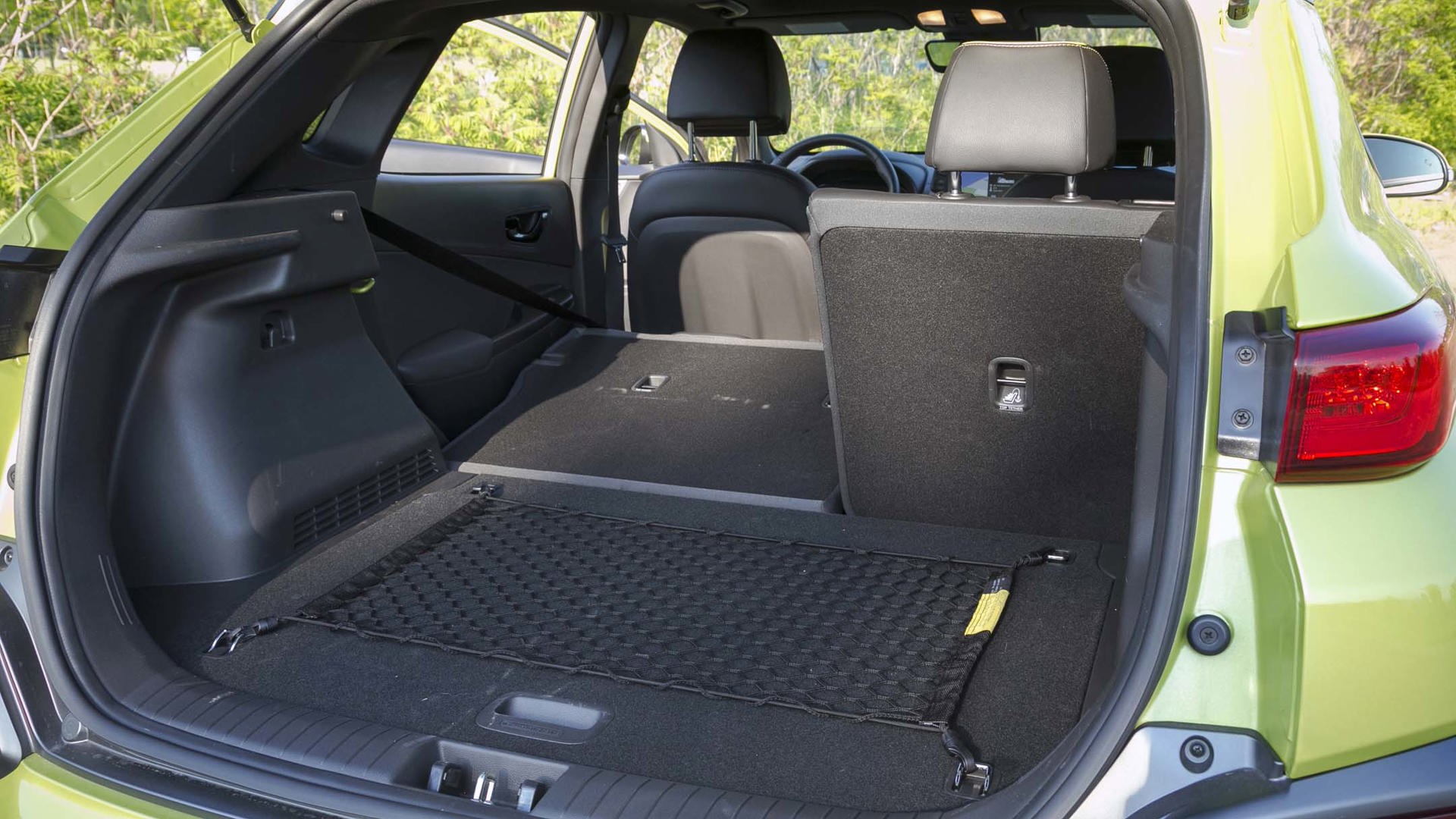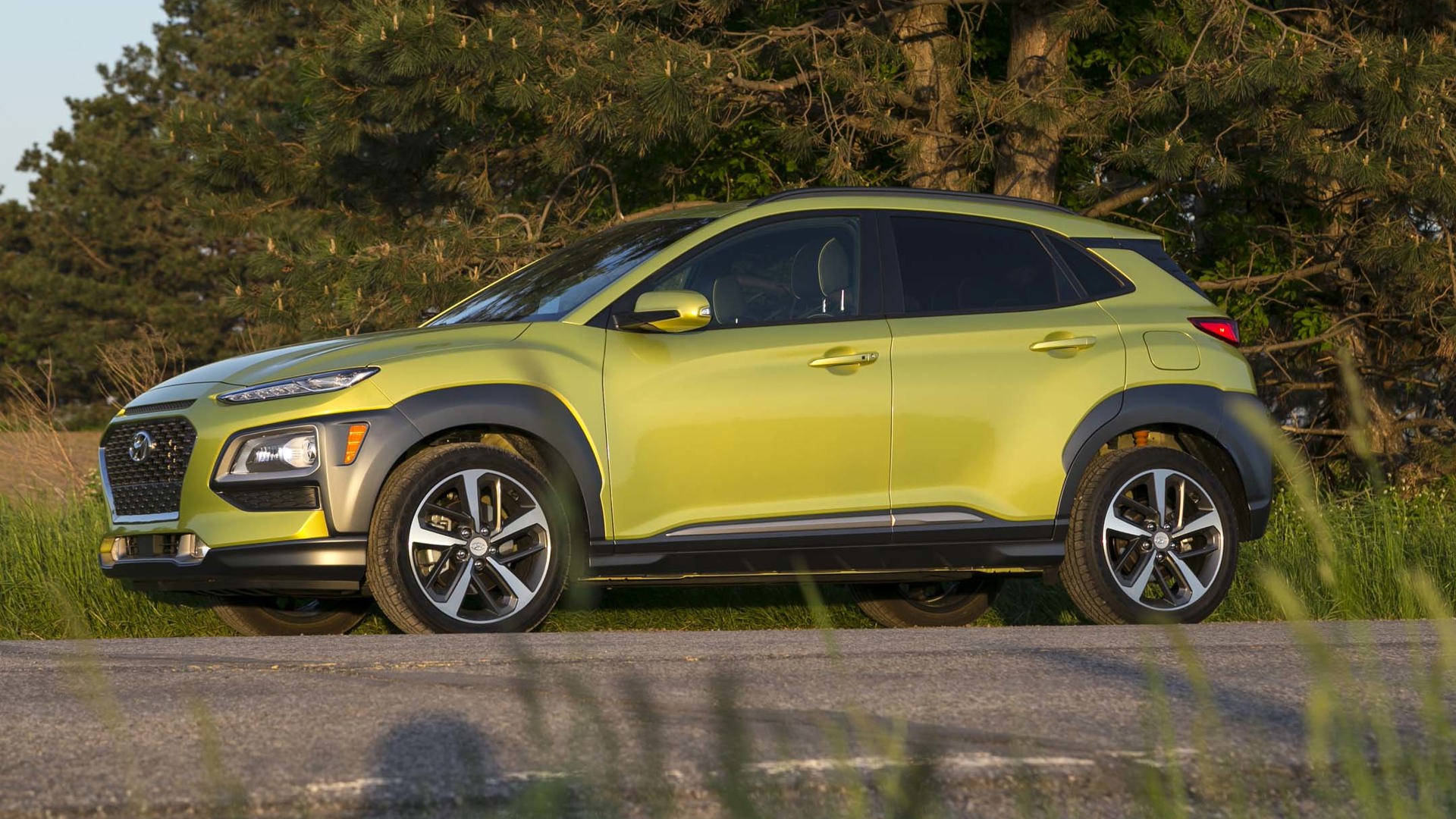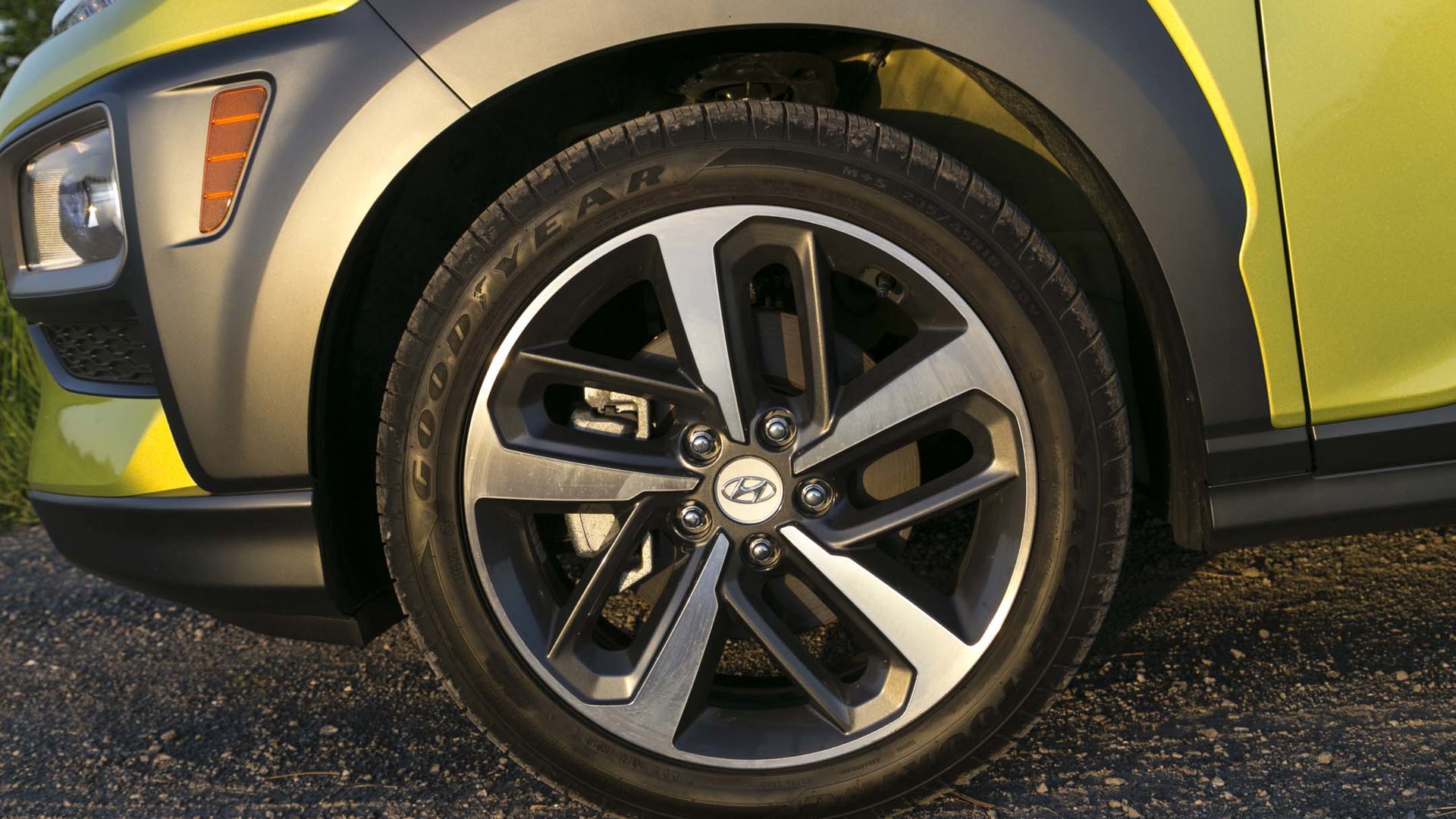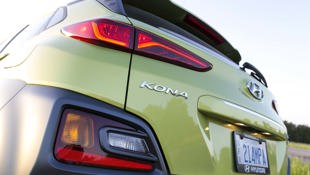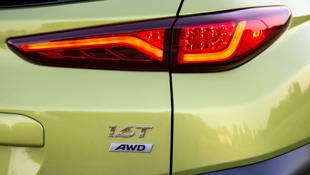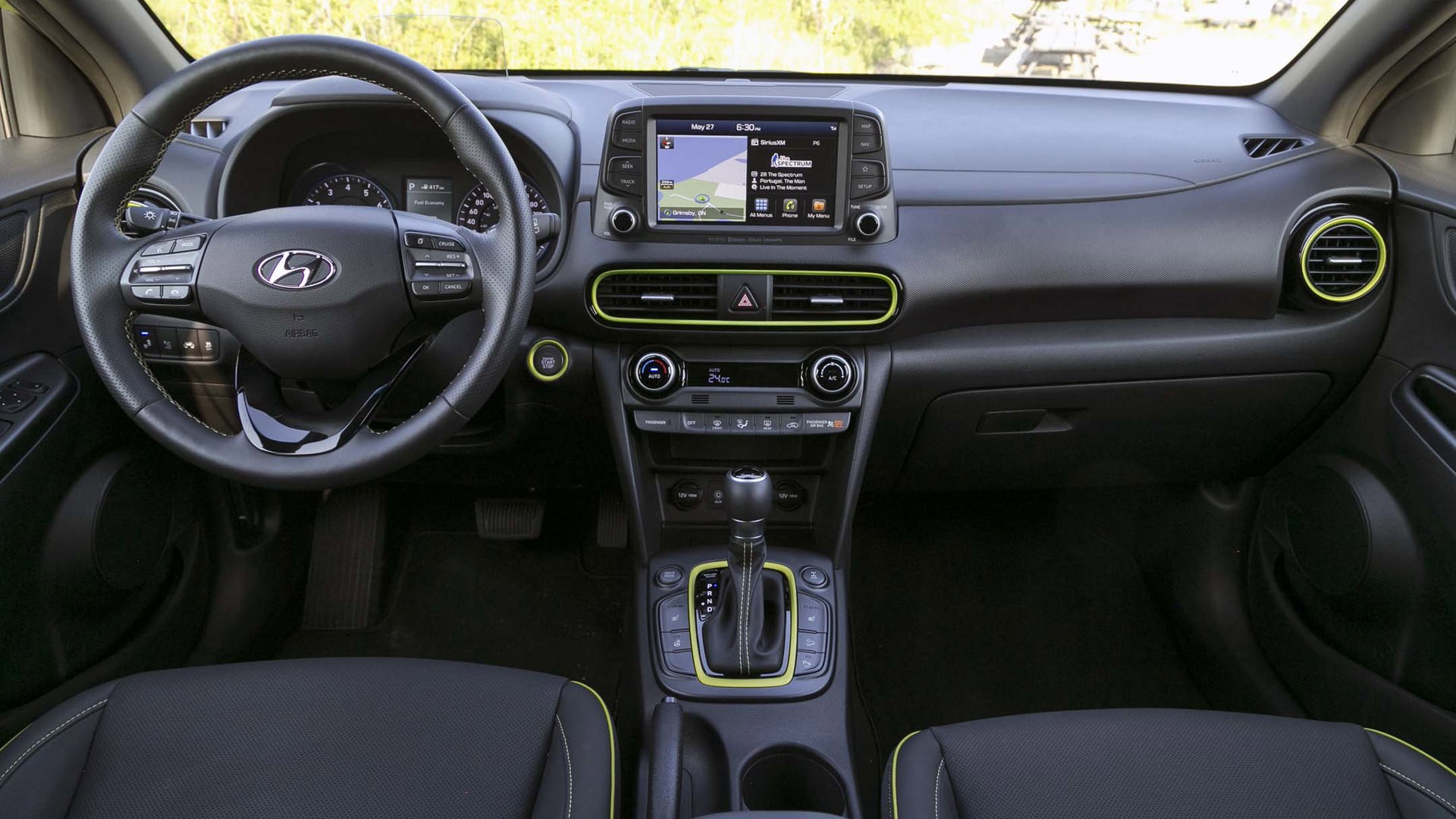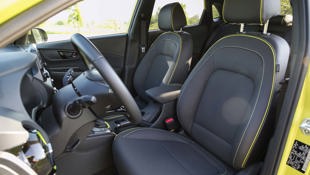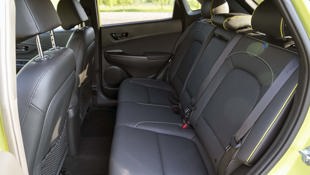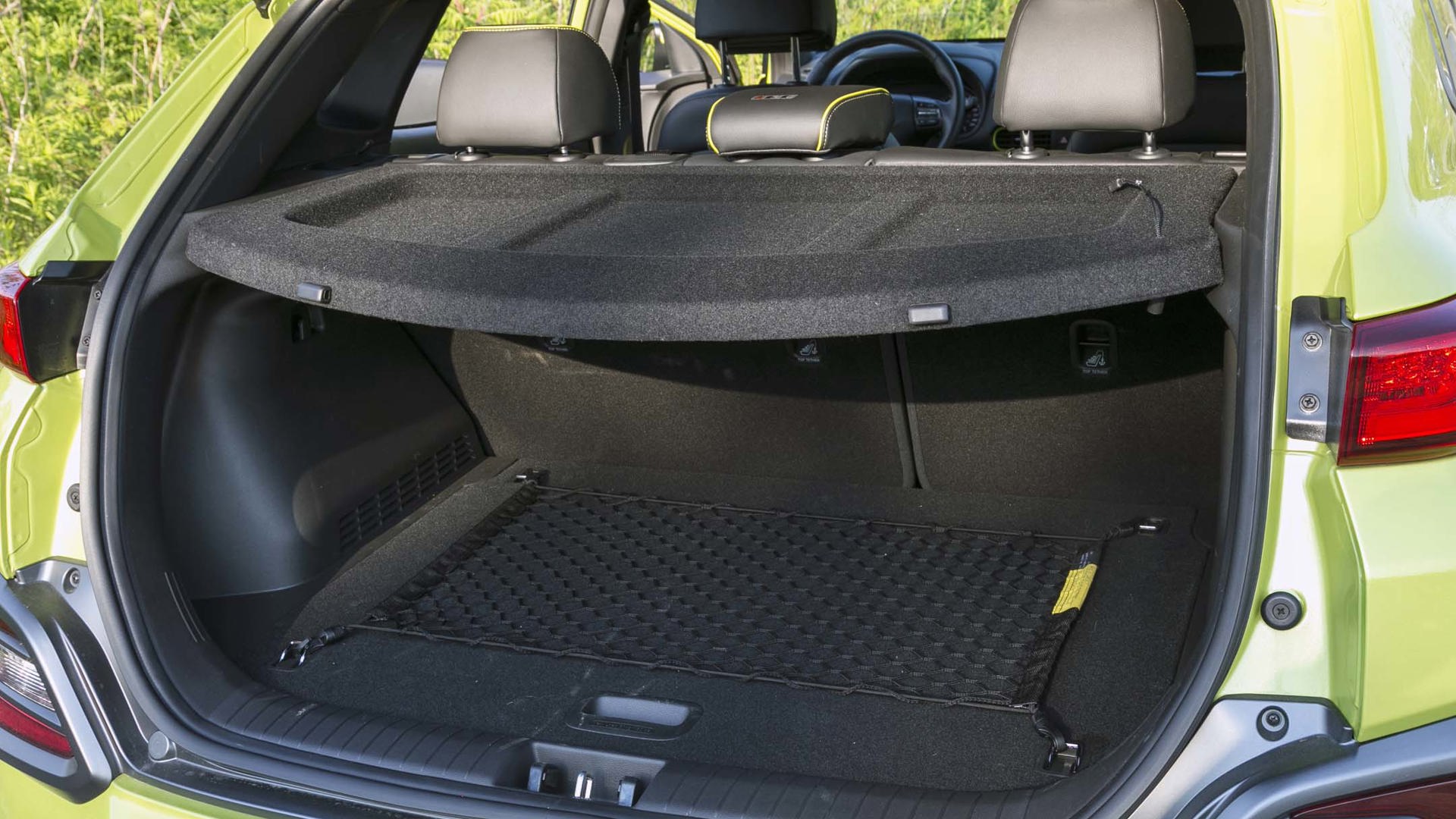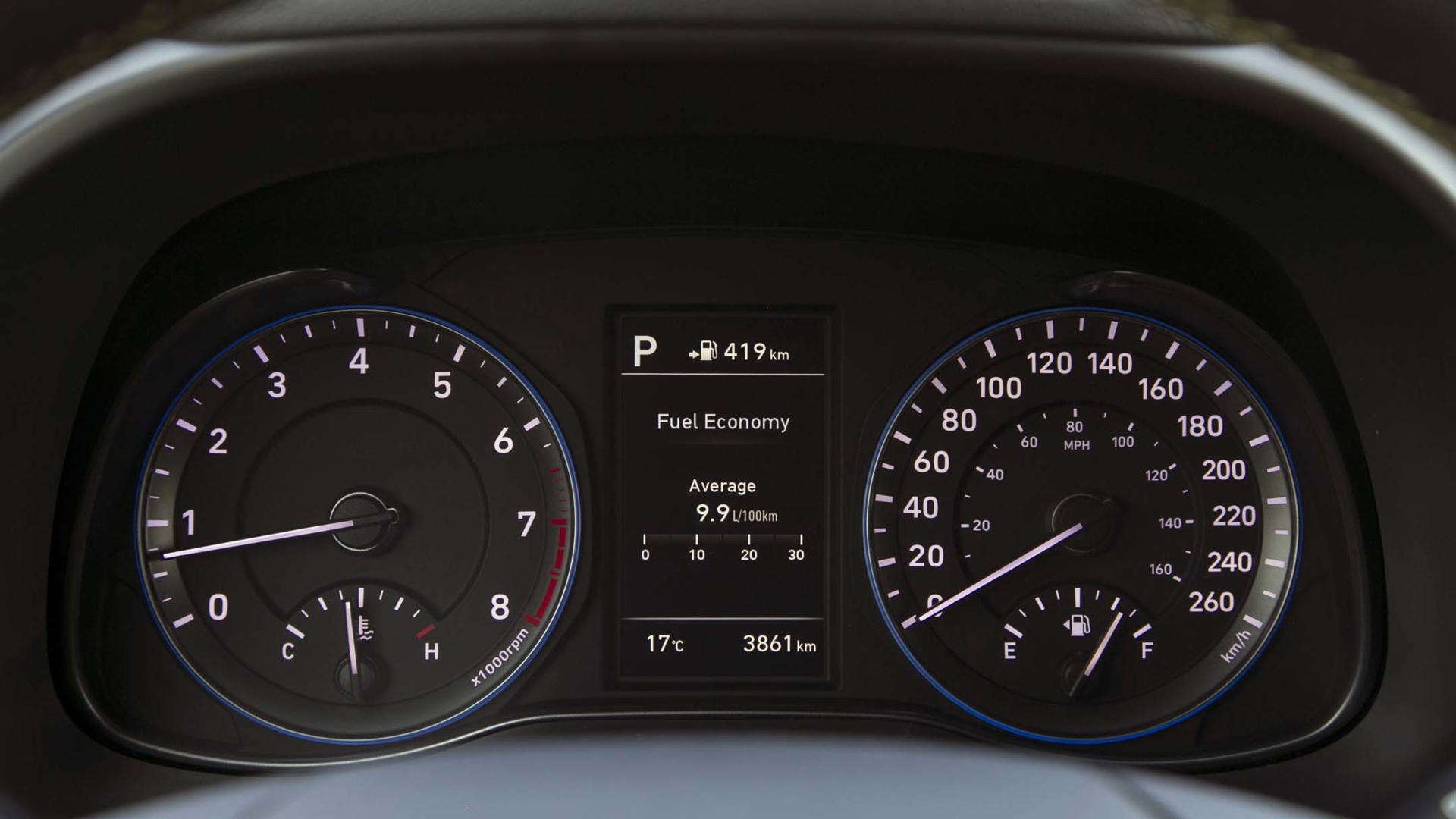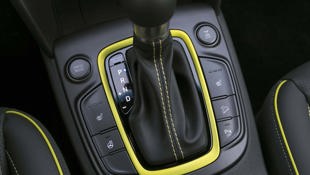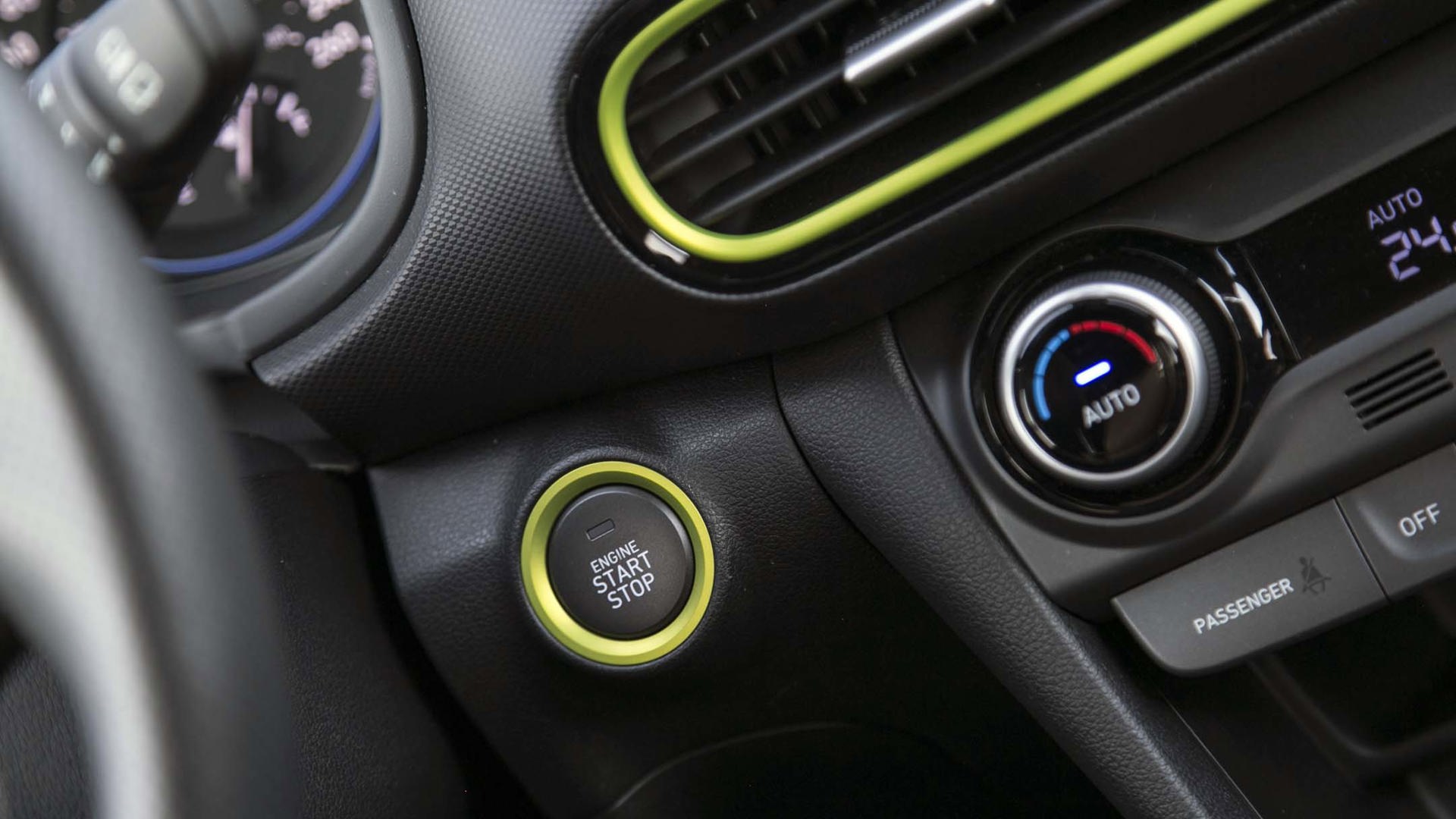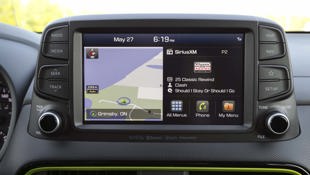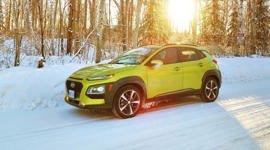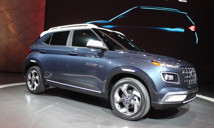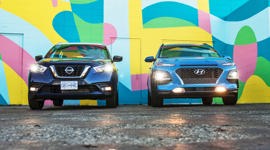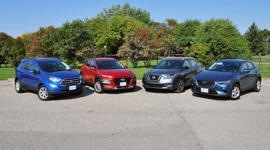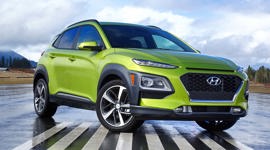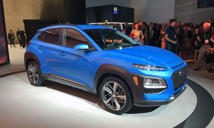 AutoTrader SCORE
AutoTrader SCORE
-
STYLING8/10
-
Safety8/10
-
PRACTICALITY7/10
-
USER-FRIENDLINESS8/10
-
FEATURES7/10
-
POWER7/10
-
COMFORT7/10
-
DRIVING FEEL8/10
-
FUEL ECONOMY7/10
-
VALUE8/10
The subcompact crossover SUV segment is the fastest-growing automotive segment with consumers practically climbing over themselves to snatch them. The manufacturers, of course, are only too happy to fulfill those requests with new models popping up like mushrooms every year.
If you don’t like the looks of the Kona, well you’re probably not cool enough for it anyway.
It’s becoming a little hard to keep up with all the new entries. Some of them will appear and contribute virtually nothing other than a padded bottom line to the manufacturers’ balance sheet.
Others, like the new 2018 Hyundai Kona, are going to create a splash.
Outrageous, done right
My test Kona virtually glowed in the dark with its “Acid Yellow” paint, grabbing even more attention. Trudging through traffic, I noticed a lot of people sitting and taking in the little Hyundai’s stand-out styling. Yes, Corvette Guy, I even noticed you trying not to notice.
Surely plenty of people were simply wondering “What the heck is that thing?”, while others undoubtedly wanted to know more about the funky little rig.
The Kona looks quite unlike anything else in the class, but it’s done right. More over-the-top than the Toyota CH-R but not just weird and ugly like Nissan’s defunct Juke, I especially like the Kona in the wild, high-contrast colour options like our test car’s, or the Tangerine Comet or Blue Lagoon shades also offered.
Of course, it’s polarizing, but that’s the point. Designed to appeal to a youthful, urban buyer, the outrageous look of the Kona will alienate some, but will still stand out in traffic for those who care. In more subdued colours, seeing those squinty front lights, some may mistake the Kona for a last-generation Jeep Cherokee.
The interior can be made to have a bit of flourish too, as the black leather interior of my tester was brightened up by acid yellow piping and trim pieces distributed liberally around the otherwise dark cabin.
Logical, intelligent interior
While not lavish in terms of finishes (the plastics are mostly of the hard, shiny type here), the ergonomic design of the Kona’s cockpit is very good. Controls are all easily within reach, and what’s more, they’re all easy to use, even for the uninitiated. The climate controls have large knobs, as does the stereo for volume and tuning. Heated seats and steering wheel buttons are large and easy to find right beside the console-mounted shifter.
It’s all quite sensible and assembled very well. But don’t assume smart design means old-fashioned. Hyundai’s infotainment system – controlled via an 8-inch touchscreen sprouting from the centre dash top – has bright and cheery graphics, Apple CarPlay and Android Auto, and is completely intuitive to use. Hyundai’s BlueLink connectivity is also available, compatible with Android and Apple apps enabling remote starting and simple climate control functionality within the Kona.
The sound through the top-level Infinity speakers is pretty decent for this price point, too.
There’s also a head-up display that should earn Hyundai an award of some sort since it’s actually visible with polarized sunglasses. You could spend a lot more on other cars and not get that (ahem, BMW).
Interior space for both passengers and cargo, are competitive, though not class-leading in any respect. Considering the funky styling, it’s nice to see that the little Kona’s functionality hasn’t been compromised much (the way it is in the Mazda CX-3). Also of note, where the rear seat in the Toyota C-HR feels claustrophobic from the squat side windows, there’s none of that sensation with the Kona.
Hyundai has made its active safety suite available on the Kona too, including autonomous emergency braking, pedestrian detection, lane-keeping assist, blind-spot monitoring and parking sensors. Unfortunately, several of those items are only available on the top “Ultimate” trim seen here.
Top-of-class speed and agility
The Ultimate trim also includes the top drivetrain offering for the Kona. A 1.6-litre, turbocharged four-cylinder engine sends power through a seven-speed dual-clutch transmission to all four wheels. All-wheel drive is available with the base 2.0-litre, normally aspirated four-cylinder engine, too for those looking to pinch a few pennies. Front-wheel drive is available only with the 2.0-litre.
The little turbo engine does a good job moving the Kona around at a spritely clip. It’s not fast, per se, but then nothing in this class is. The 175 hp surpasses most of the competitors and the torque, at 195 lb-ft is best-in-class by a sizeable margin and it comes on at only 1,500 rpm.
That dual-clutch gearbox does a very good job, and under most conditions feels as seamless as a traditional automatic. During aggressive driving, the shifts are very quick – again, bettering the competitors at this class. However, during grinding stop-and-go Toronto traffic, there’s a bit of a hesitation and shimmy through the transmission as the clutches try to smoothly dispense that torque.
Handling is another area where the Kona equals or betters the best of the category. Fitted with Goodyear Eagle Touring tires (235/45-18 size), grip is decent and the steering is nicely weighted. The braking feels a bit mushy after some good initial bite, but stopping is always straight and true, even in emergency situations.
Vehicles this small tend to feel nimble at the worst of times, but the Kona not only changes directions quickly, it never feels unstable when doing so. This is a solid-feeling, well-built little rig, and it reminds me that the Koreans are hell-bent on leaving the soggy-handling cars of generations before in the past.
Even the road, engine and wind noises are sufficiently quelled in the Kona, making for a pretty-well-rounded machine.
If you want to stand out in this segment, the Kona is the best choice, especially since looking so good doesn’t mean the owner has to compromise much. It’s small, but practical; stylish but functional, and it’s well-built on top of all that.
And if you don’t like the looks of the Kona, well you’re probably not cool enough for it anyway.
| Engine Displacement | 1.6L |
|---|---|
| Engine Cylinders | 4 |
| Peak Horsepower | 175 hp |
| Peak Torque | 195 lb-ft |
| Fuel Economy | 9.0/8.0/8.6 L/100 km cty/hwy/cmb |
| Cargo Space | 544 / 1,296 L seats down |
| Model Tested | 2018 Hyundai Kona 1.6T Ultimate |
| Base Price | $31,799 |
| A/C Tax | $100 |
| Destination Fee | $1,805 |
| Price as Tested | $33,904 |
|
Optional Equipment
$200 – Interior colour package $200
|
|
